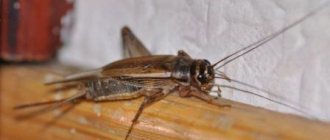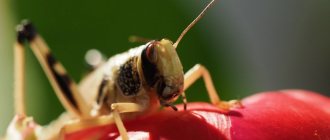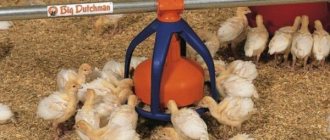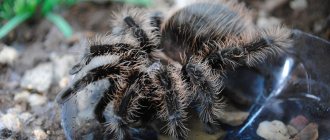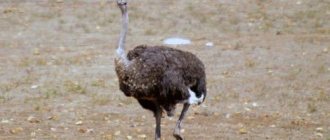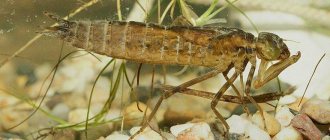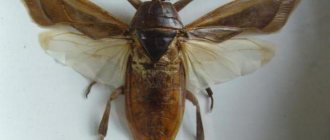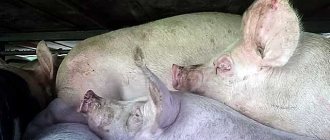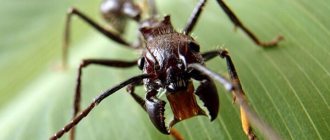- Wild animals
- >>
- Mammals
The African buffalo is a powerful, strong, and very formidable animal. In Africa, many people die every year as a result of buffalo attacks. These ungulates are second in power and danger only to the huge Nile crocodiles and hippopotamuses. It is worth noting that along with power and danger, he is quite vulnerable. It is the largest representative of all existing ungulates. African black buffaloes are also called Kaffir buffalos.
Lifestyle
In their life cycle, animals adhere to the following daily routine: during hot hours they stand under the shade of branchy trees or lie in mud pits, and with the onset of dusk and coolness they begin to graze, greedily eating grass.
Every day, African buffalos arrange a watering hole for themselves. According to some reports, they can drink up to forty liters per day, and never go further than four kilometers from bodies of water.
They do not like to be deep in water, although they swim very well - during the migration period, wild bulls can swim across fairly wide rivers.
Buffaloes are always on guard, especially females, when grazing with calves. Their favorite pose is their head raised up with their horns thrown back.
As noted above, the skin and wool of buffaloes are very often attacked by parasites - gadflies, ticks, flies, etc. Therefore, on the backs of animals you can often see all kinds of birds that peck insects and their larvae from the fur. However, this does not always help. Pests can accumulate in places inaccessible to feathered rescuers - on the belly, between the horns, in the groin. Thus, they cause wild pain to the bulls.
The lifespan of wild buffaloes rarely reaches twenty years, although in zoos and nurseries they can live up to twenty-five or more.
What does it eat?
Buffaloes mainly eat grass, which contains protein. This is why animals spend a lot of time searching for food, even at night. Sometimes these solitary animals are attacked by predators such as lions. They look for very juicy grass, and therefore travel great distances. Often you have to deal with elephants for such food. Usually these elephant representatives are somewhere nearby. During times of drought, it is limited to small skirmishes, since the buffalo likes to eat the grass it wants. In such cases, these herbivores leave, leaving the conflict without development.
The most nutritious food for buffaloes grows during the rainy season. At this time, these animals begin to have cubs. They feel calm under the protection of their parents. In dangerous moments they always come to the rescue.
Asian or Indian buffalo
At the moment, the situation in which the Asiatic buffalo finds itself looks quite dire. The fact is that it is on the verge of extinction, largely due to the fact that wild individuals actively mate with domestic ones. As a result of this, a mixture of blood occurs and the Water Buffalo degenerates as a species. But it’s not too late to correct the situation, because there are many reserves where “Asians” are bred artificially. And in a number of countries there are safe places in natural conditions.
Appearance
The Indian buffalo is one of the largest mammals. Its dimensions reach impressive sizes. Just think about it: the length is about four meters, the height is about two meters, and the weight often exceeds one ton. Among all the bulls living in the natural environment, the Water Buffalo is the largest, surpassing even its African counterpart.
The Indian buffalo has an appearance that, without exaggeration, is capable of instilling fear in the enemy. A huge carcass rises on long legs, which hide unprecedented power. On the large head there are horns curved upward and slightly backward. In an adult, their length reaches one and a half meters. Females have straight and slightly smaller horns.
What can we say about the strength of these animals, even if the tail can cause significant injury. It looks very massive, and its length can reach 90 cm. It is noteworthy that only the wild Asian buffalo has such impressive parameters, while domesticated individuals grow a little smaller. But their life expectancy is as much as 23-26 years. In the video from the Animal World channel you will see an interesting photo selection of these artiodactyls.
Habitat and lifestyle
The name Water Buffalo speaks for itself. These animals spend most of the day in the water, where they feel as if they are at home. They are almost completely submerged in the water, leaving only their heads with massive horns above the surface. The Asian buffalo is most often found near rivers, swamps and other bodies of water remote from the bustle of the city.
As for countries, here too the name gives away their territorial affiliation. The Indian buffalo is found in parts of India, Bhutan, Thailand, Nepal and Indonesia. The habitat of domesticated animals is much wider, because in isolation from the wild they live and reproduce well.
Human use
Our ancestors were also able to appreciate the benefits of raising cattle thanks to the fact that the Indian buffalo allowed itself to be domesticated. Many centuries have passed since then, but the value of these animals not only has not decreased, but rather increased. Today, the Water Ox is raised as a pet in many countries, making it an excellent assistant on the farm. It is used for cultivating and cultivating arable land, where, thanks to its strength, it easily replaces a tractor.
Power and strength are far from the only advantages of Indian buffaloes. Raised like cattle, they produce a lot of meat and fatty milk (from which excellent cheese is made), and their skin and horns can always be used on the farm.
Asiatic buffalo and its subspecies
Asiatic buffalo have been domesticated by humans for 4,500–5,000 years. Wild and domestic bulls differ in appearance and behavior. Domestic buffaloes are used for meat, milk, hides and horns. They also serve as a means of transport in some Asian countries or as agricultural "machinery" for plowing fields.
Physical characteristics
The Asian buffalo has a massive build with rather short legs. Males are usually much larger than females. The bull has a narrowed muzzle, small ears and weighty long horns. The horns are ribbed and serve as a guide for bulls. The distance between the horns reaches two meters. The wild buffalo is easily distinguished from other species by the presence of long saber-shaped horns.
The horns of a domesticated bull have a dense curl or crescent shape, but rarely reach large sizes. The hooves are wide, preventing them from sinking into mud, which they love. Wild Asian buffalo can weigh up to a thousand kilograms and are capable of fighting off any predator. This is one of the largest bulls with an average height at the withers of 180-200 centimeters.
Where do they live?
Water buffaloes live in the countries of Southeast Asia. India is home to most of this bull species, although they are also found throughout Nepal, Bhutan, Myanmar and Thailand. Asiatic buffalo were introduced and have taken root well in North Africa, Brazil, Central America and Australia. The ideal environment for it is meadows and forests with tall grass, swamps, and sufficient water.
Diet
The Asian buffalo is a herbivore and eats various herbs, aquatic plants, and the foliage of some shrubs. Bulls graze mainly in the morning and evening, sometimes at night.
Behavior
A typical wild buffalo herd consists of 10 to 20 individuals, led by dominant, older females. In hot weather, their favorite pastime is swimming in mud, which provides them with protection from insect bites. The horns are sometimes used as a shovel to increase the capture of dirt. Bulls are active both day and night, but the peak of activity comes in the evening.
Reproduction
Sexual maturity in female Asian buffalo occurs at 1.5 years, and in males about three years, depending on the species. After mating, the female drives the bull away to rest for a period of 12 to 72 hours. The gestation period lasts from 300 to 340 days, after which the female gives birth to one to two calves. At birth, the calf weighs between 35 and 40 kilograms. The mother nurses him for 6 to 9 months.
Domesticated Asian buffalo
The buffalo farming system depends on the purpose for which the bulls are raised. Most of them are kept on small farms or family farms. Domestic buffalo milk contains higher levels of crude protein, fat, calcium, phosphorus, and lactose.
This total solids content makes buffalo milk ideal for cheese production. There are 22 known varieties of domesticated water bull. China has a huge diversity of buffalo genetic resources, including 16 indigenous breeds.
African buffalo
African or black buffalo inhabit the sub-Saharan savanna. Currently, the population of these animals is growing, but they have not yet been excluded from the Red Book. The African buffalo includes several subspecies:
- Typical black, or Cape;
- Red dwarf;
- Aequinocticus;
- Mountain.
Appearance
The African buffalo is a huge animal, one of the largest on the African continent. His height is shorter than that of the Asian, but his weight is greater. This is what the most numerous Cape buffalo subspecies looks like:
- The head is large and set low.
- The horns of males from 5-6 years of age grow together in the middle, forming a helmet, bent down and to the sides, the distance between the ends reaches a meter.
- The body is muscular, the front part is more massive than the back.
- The legs are powerful, better developed in front than in the back.
- The fur is thin and black; in older males, white spots appear around the eyes.
- At the tip of the tail there is a long brush.
Buffaloes have pronounced sexual dimorphism. Females are much smaller than males and have small horns. Often, cows' fur is lighter, with a pronounced reddish tint. The weight of an adult buffalo is 700-900 kg; there are individuals weighing 1200 kg. Height - 1.5-1.8 m, body length - 3-3.4 m.
Buffaloes have a well-developed sense of smell and hearing, but their eyesight is poor and they are nearsighted. The dwarf species is shorter, its fur is red, only the head and neck are colored black. He lives in a forest area.
Habitat and lifestyle
The African buffalo lives in the savannah, where there is sufficient rainfall. It stays close to the watering hole, rarely moving further than 4 km from it. Animals eat tall grass, which contains a lot of fiber. Shrubs make up about 5% of the diet. Buffaloes prefer to eat certain types of grasses, while others are only forced to eat.
The African buffalo is a herd animal. This way he can better protect himself from enemies; not a single predator will dare to approach a large group of animals. Even a pride of lions can be driven away by bulls and heifers, especially when they are protecting cubs. A herd of buffalo can number from several hundred to a thousand heads.
Herds of buffalo move slowly, no large migration has been observed behind them, but in case of danger they can reach speeds of up to 60 km/h. During the rutting season, which begins in March or April, the herd breaks up into smaller groups.
The main natural enemies of artiodactyl animals in Africa are the lion, leopard, cheetah, and less commonly the hyena. They most often hunt calves and pregnant females, weakened and sick animals. When attacked, the entire herd may come to the defense of the victim. The fight or battle between buffaloes and lions is short but very fierce. Buffaloes suffer from insects and ticks; some flies lay eggs in their skin, at the base of the horns. Crocodiles can wait for the bulls at the watering hole; they mainly hunt for cubs. In some cases, a hippopotamus, or rer, as the ancient Egyptians called this large animal, may attack.
Behavior
In the north of Tanzania there is a national park near Lake Manyero. It is here that the largest population of these herbivores is found. Animals are attracted to the spacious pastures located in the green area between the lake and the mountain slopes. Some adult bulls do not connect their lives with the laws of the herd, preferring an independent existence. Its impressive size and large, strong antlers are a sufficient reason to feel safe.
Decisions important for the herd are made by high-ranking females, and controversial issues are resolved through a special form of voting. Closer to lunch, the herd lays down to process the morning feed. From time to time, the dominant females rise to their feet, turning in a certain direction, and the rest closely follow them. As a result, the herd will move further in the direction chosen by the “majority of voters.”
At the same time, it is time for procedures related to personal hygiene. Local species of woodpeckers and herons are happy to provide their skinning services in exchange for insects collected under the fur. Thus, birds help buffaloes regulate populations of parasitic insects that can carry pathogens. The immune system of an adult buffalo can cope with almost all common diseases. However, weakened individuals can become victims of parasites.
Breeding and care
In the wild, the breeding season for buffalos is March-May. At this time, ritual fights take place between the bulls in order to determine the strongest male in the herd. It happens like this - two African bulls stand opposite each other and gradually begin to get closer, trying to intimidate their opponent. Usually the maneuver works and the loser hurries to leave the battlefield, but if both bulls do not want to admit that they are losers, then a battle occurs. Bulls run towards each other and collide with their heads; often the collision ends with one of the rivals breaking a horn.
Important! During the rutting season, bulls are particularly ferocious and aggressive; approaching them is dangerous. The average duration of pregnancy is 10-11 months. During calving, females usually move away from the herd and give birth to one calf weighing 40-50 kilograms. After just 15 minutes, the calf is able to move independently, and the female and calf return to the herd
The average duration of pregnancy is 10-11 months. During calving, females usually move away from the herd and give birth to one calf weighing 40-50 kilograms. After just 15 minutes, the calf is able to move independently, and the female and calf return to the herd.
For about 6 months, the calf feeds on its mother's milk, although it begins to make attempts to feed on grass already in the first month of life.
Buffalo calf
As for the age suitable for reproduction, females can mate at three years of age, but usually the first pregnancy occurs at the age of five. A bull calf is capable of reproduction already at one year of age.
But this is in nature, but what about economic breeding? The main difference is that animals can mate all year round without regard to the natural boundaries of the mating season. The reproduction process can be carried out by two methods - natural and artificial.
Among natural methods of reproduction, three types are popular:
- manual (matting under control);
- cooking method;
- free method.
But it is worth noting the fact that now natural methods of reproduction are not used almost anywhere. Because artificial insemination methods for cattle are much simpler, more effective and more profitable.
A little about keeping African bulls. As it turned out, they are even easier to keep than cows. Buffaloes need everything the same as an ordinary cow - good pastures and a regular barn. In addition, they are not so picky in their diet, and can eat feed that is not suitable for cows. Corn stalks, straw from legumes and cereals can all be fed to buffaloes without any worries. And in winter they can even eat spruce branches. When it comes to pastures, these animals are also not known for their whims; they can easily graze where ordinary cows cannot. For example, in a swampy area or forest pasture. Ferns, sedges and nettles—they eat these plants with great pleasure.
Buffalo is unpretentious in nutrition
Despite the fact that the homeland of these animals is Africa, they perfectly tolerate both hot climates and cold Siberian winters. But at the same time, experienced livestock breeders insist that in winter, buffaloes need a warm permanent barn.
Natural enemies
The main enemy of the African buffalo is the lion, which often attacks herds of these animals in a pride, and females and calves most often become their victims. However, lions try not to hunt adult large males if there is other potential prey.
Weakened animals and young animals also become victims of other predators: such as leopards or spotted hyenas, and crocodiles pose a danger to buffaloes at watering places.
Asiatic buffaloes are hunted by tigers, as well as marsh and saltwater crocodiles. Red wolves and leopards can also attack females and calves. And for Indonesian populations, in addition, Komodo dragons are also dangerous.
Return to content
Asian buffalo
The wild Asian buffalo is a rare species that lives in India, Nepal, Sri Lanka, and is acclimatized in Australia. Previously, it inhabited vast territories from Mesopotamia to southern China. Now the main habitat of this species is a reserve. The fact is that intensive development of territories for agricultural land is reducing the environment where these large artiodactyls live. Crossbreeding with domestic animals is also a problem, which is difficult to prevent since buffaloes live close to people.
Appearance
The Asian or Indian buffalo is taller than the African one, but its body is not so powerful, so its weight is somewhat less. Here is his description and appearance characteristics:
- The head has a square muzzle and is lowered down.
- The horns are triangular in cut, laid back, bent in an arc, forming a crescent, the length can reach 2 m.
- The body is powerful, muscular, the front part is better developed than the back.
- The skin is covered with thin black fur.
- The tail is long, with a stiff tassel at the end.
Like the African one, the Asian species has pronounced sexual dimorphism. The female buffalo is approximately 1.5 times smaller than the male. The average bull weighs 800-900 kg, sometimes reaching 1000 kg and very rarely 1200 kg.
Habitat and lifestyle
The Asian buffalo lives in wooded or steppe areas. Animals need bodies of water and do not go far from them. In hot weather, this type of buffalo likes to wallow in the mud: this not only gives coolness, but also allows you to get rid of parasites. Bulls eat juicy large grains: they are more picky about food than African bulls. This herbivore grazes in the early morning and late evening, sometimes at night. He prefers to rest during the day.
Buffaloes from Asia also gather in herds, but not as large as African ones. During the rutting season, the herd breaks up into smaller groups
Males fight among themselves for the attention of females. Living close to people made Asian buffaloes very angry, because for them people are always an enemy and a threat to life
A bull can attack even for no apparent reason. If a buffalo has a baby, it will defend it even more aggressively.
These large animals have few natural enemies. Tigers, sometimes leopards, and crocodiles hunt buffalos. In Indonesia, they become victims of attacks by Komodo dragons. Thick-skinned bulls and heifers are plagued by ticks and insects, from which they escape in the swamp. There are several species of birds that peck parasites from buffalo hides.
Wildlife Gangsters - Buffaloes
Animals of the world Deserts and savannas Motherly feeling Buffalo rival of a lion The most dangerous Africa
A furious buffalo attacked a crowd of people. Tough! / Brutal bull!
HYENAS BITE OFF BUFFALO'S EGGS. BUFFALO VS HYENAS.
2 million views in 2 days • Buffalo vs lion
Domesticated Asian buffalo
Domestic buffalo can be seen in fields throughout Southeast Asia. It is actively used in various sectors of the household. Buffalo milk is very fatty and nutritious, although the milk yield is not as high as that of cows. Since this species is not considered sacred, buffalo meat is actively used in India. It is a little tougher than beef, but quite edible.
Buffaloes are also bred as pets in some European countries (Italy, Greece, Hungary). Buffalo milk is used to make the famous Italian mozzarella cheese, although the product made according to the original recipe is now difficult to find. Most manufacturers use cow's milk.
Record holder Lach
Arkansas had a record case in the 2000s. An African bull named Lach became famous for its incredible horns. The girth of the animal's horn exceeded 92 centimeters. The weight of each of them is 50 kilograms. The Guinness Book of Records recorded the record in 2003. In 2010, the bull Lach died during an illness.
Currently, the number of African Watussi is rapidly declining. This is primarily due to the fact that residents take all the milk from cows, leaving none for the young animals. The mortality of young individuals from hunger and malnutrition does not allow the population to grow at the required pace.
Tribal residents are gradually switching to keeping cows that produce the most milk.
General characteristics of buffaloes
The buffalo is a massive ruminant animal that belongs to the order of artiodactyls. The pride of these representatives is their hollow horns, which grow not upward, but to the sides, and come in different shapes and sizes, depending on the breed of buffalo.
Did you know? This wild animal constantly needs water, both for drinking and for bathing, so the buffalo family cannot live in places that are too dry and receive less than 200 mm of rainfall per year.
The buffalo's closest relatives are gaurs, batengs and koupreys. This beauty lives exclusively in hot countries; cold winters and strong northern winds are fatal to it, so it is impossible to meet a wild buffalo on the territory of Ukraine and Russia.
In most countries where they live, hunting buffalo is prohibited by law, since in recent years the population of all breeds has begun to rapidly decline due to global warming and drying up of waters in the habitats of wild bulls.
Find out what a wild bull like the Watussi looks like and where it lives.
These horned artiodactyls are herd animals, and there is a good reason for this: a bull by itself cannot fend for itself in a fight with a wild predator, but being in a herd, there is a huge probability that it will be able to intimidate enemies with its huge size and other wild animals are simply afraid to attack such big guys.
The head of the family is the most mature female, so matriarchy reigns among these bulls. The livestock of an entire family can reach as many as 800 representatives (the number of heads depends on the breed).
Many people consider buffaloes to be aggressive because of their large size and stern look, but this is in vain. Even in the wild, males and females are quite phlegmatic, unless, of course, their lives are in danger. The herd spends most of the day at a watering hole, and the rest of their free time they bask in the shade, eating grass.
Important! Buffaloes produce very fatty, healthy milk, which is popularly called “pure cream.” The fat content of such a product sometimes exceeds 9%.
The role of males
A favorite pastime of buffaloes is taking mud baths. Dirt frozen on the skin perfectly protects against blood-sucking parasites; when it falls off, it takes ticks with it. An adult bull that joins the herd immediately begins to take an active part in the life of the group. First of all, he pays attention to free females ready for fertilization. The female chooses a gentleman according to her status, and if he does not suit her, then she simply runs away.
Next, the male needs to keep an eye on his competitors, who must either retreat or put up worthy resistance. Although there are no serious battles between adult males, they determine their status in their youth and never return to this issue. But the goby’s most important duty is to monitor movements in the surrounding grass. In case of the slightest danger, he will be the first to raise the alarm and defend the herd.
Description and photo of Buffalos
The buffalo (or buffalo) differs from the domestic bull in its larger body size, the presence of huge horns and a greater passion for water (in some species).
Who is a buffalo - what is this animal like?
A buffalo is the size of a bull with large horns, a ferocious and dangerous animal.
What do buffaloes eat?
Buffaloes are herbivores and therefore feed only on vegetation. Their favorite food is herbaceous vegetation, water buffalo will also eat aquatic plants. African and Asian buffalo will eat bushes and trees when they cannot find grassy vegetation to eat.
Buffalo Habits
Buffalo are social animals and live in groups called herds.
Water buffalo herds are separated by sex. Young males remain with the mother herd for about three years and then join the male herd. Maternal herds have up to 30 females and their offspring. Male herds number up to 10 people.
African buffalo herds are mostly of mixed sex. They have herds that are exclusively male, and as a rule they consist of old males. An African herd often numbers more than 1,000 animals.
Offspring and gestation period of buffaloes
The young offspring of buffaloes are commonly called buffalos, although the general name for the young of all cattle is called a calf.
Photo of African buffalo calf
Asian buffalo calf with mom
Typically, a Buffalo gives birth to one calf, and the gestation period for a female buffalo is 9 to 11 months. Females become pregnant once every two years. Once the calf is born, the buffalo will remain with its mother for about three years. The males will then be moved into the male herd (typically in Asian herds), while the females will remain in the female herd.
How long do buffaloes live?
The life expectancy of the African buffalo in the wild is about 15 years; in captivity they can live up to 25 years. Asian buffalos live for approximately 26 years. In zoos, their life expectancy increases significantly and can be almost 30 years.
AFRICAN BUFFALO (Syncerus caffer)
It lives south of the Sahara and its numbers are declining. They move en masse across savannas and forest expanses, which occupy vast areas in Africa, but try to migrate within reach of water sources.
African buffalo are never far from water and they never roam more than 20 kilometers from a body of water. However, instead of spending their days swimming in bodies of water, they lie under trees to keep cool. At night they like to graze in the cool air.
The massive horns of the African buffalo cover almost the entire forehead of the animal.
African buffalo herds come in different sizes - a large one has several hundred animals, and a small one has only a dozen animals. The largest herds of buffalo graze in the savannas and consist mainly of females and calves. Between males that keep separately, conflicts sometimes arise, especially becoming more frequent during the mating season.
African buffalos are very aggressive and tend to attack people. They are very protective of each other and care for sick and old members of the herd, protecting them from predators.
The photo shows buffaloes with large horns.
A long tail with a tassel at the end is very convenient for the animal to drive away insects. The buffalo's body is covered with sparse, coarse black-brown hair. Buffalo leather is very thick and durable.
The African buffalo is not endangered and has a population of 900,000, according to the African Wildlife Foundation.
ASIAN BUFFALO (Bubalus bubalis)
The Asian, or Indian, buffalo lives in southern Asia. It lives in swampy jungles and river valleys overgrown with bushes. The height of the animal reaches almost 2 meters, and its weight is one ton.
The Asian water buffalo lives in tropical and subtropical forests of Asia. They are so named because they spend most of their time in the water. Their hooves are very wide and prevent them from sinking into the mud at the bottom of ponds, swamps and rivers.
The water buffalo was domesticated more than 5,000 years ago. People use these animals - meat, milk, horns and skin. Buffaloes are also used for transportation and for pulling plows. According to the International Union for Conservation of Nature, the Asian wild buffalo is critically endangered. Their population is less than 4,000 individuals, although exact numbers are unknown.
The powerful head of Asian buffaloes is sometimes decorated with huge 2-meter horns curved back.
Photos of buffaloes in good quality.
Photo of an African buffalo with huge horns.
Breeding offspring
Often, single males stay close to the herd to produce offspring. The female can do this once every two years. She carries the cubs for a year, and then feeds them for another year. If there is a calf next to the mother, then she will not soon be able to bear and feed another baby again. Sometimes males don't look at this and are cruelly rejected.
During the rains, herds with many young animals migrate, constantly crossing water spaces. It is very common for calves to drown or get lost. Then it is difficult for them to find the mother in the herd, and she herself does not even try to look for him - she easily accepts this situation.
Buffalo with baby
Calves usually immediately stand up and follow their mother. Although not everyone has the strength to do this. To overcome obstacles and walk long distances, you need to eat a lot of nutritious food, which is the female’s milk. It contributes to the development of the baby, and not only gives strength.
Bison and bison
Bison is another wild bull whose power and size are surprising even in the photo. Its history goes back to the Stone Age. Outwardly, it is very similar to a bison; they are easy to confuse.
The main characteristics of a bison's appearance are a hump formed by high and steep withers, and a low-set head with a very wide frontal area. The ends of its short horns are curved inward. What makes it look massive is the dense vegetation on the front of the body (on the chin, neck, shoulders), which is tangled into shreds. The tail is short, decorated with a tassel.
Having a mass of up to 1.2 tons (for females - 700 kg), a body length of 2.5-3 m and a height of 1.9 m, the bison is one of the largest of all ungulates on the planet.
Its color can be black, gray or brown, with lighter hair on the shoulders, and calves are usually very light, yellow in color, although light-colored adults can occasionally be found.
Bison lifestyle
Bison are characterized by measured behavior, non-aggressive outside the danger zone. If they need to save their lives, they run at a speed of 50 km/h. Representatives of these wild animals swim, have excellent hearing and sense of smell, but their eyesight is very poor.
Bison feed mainly at night. They eat grass.
Their habitat is North America (Canada, central states).
The following subspecies are distinguished:
- forest (live to the north, in the forest),
- plain or steppe (live in the southern prairies).
Preservation
Today, they try to keep North American bison in protected areas and in zoos, since their numbers have sharply decreased since the 19th century. The millions of livestock of their mighty ancestors became vulnerable to European colonialists. They were killed simply for fun or to deprive the local Indians of food. In 1889, only 835 copies remained.
They are listed in the Red Book, but thanks to the efforts of the authorities of Canada and the United States, today our planet has up to 30 thousand individuals of this species (not counting domesticated half-breeds).
The bison's brothers, the bison, live in Russia, the Caucasus, Ukraine, Belarus, Moldova, and Lithuania. In Europe they are the largest mammal, and also the last of all the wild bulls inhabiting Europe.
The head of the bison is more clearly defined than that of the bison and somewhat smaller in size. The body shape is close to a square, the body is massive, and the tail is short. The color is brown, the hair becomes longer from the back of the head and on the spine.
These animals swim well, jump high, and live up to 40 years.
There are Caucasian and Belovezhsky bison. The former became extinct at the beginning of the twentieth century, and the latter are under the protection of the International Union for Conservation of Nature.
Due to the outstanding genetic qualities of bison and bison, attempts are being made to domesticate and use them in developing new breeds.
Another worthy representatives of wild bulls and cows are buffalos, relatives of bison, yaks, etc.
There are two types of buffalo:
- Asian (tamaraw, mountain anoa, anoa, Asian buffalo),
- African.
Asian genus
An individual from the Asian genus is a wild bull with huge horns up to 2 m long. Its horns look back and resemble a crescent moon. The height of a buffalo is about 2 m, body length is 3 m, weight is up to 900 kg.
There are also small specimens among them. This is a Tamaraw. Their height is 106 cm, their weight is no more than 300 kg, their body is 220 cm long. There are also anoas 80 cm high and weighing 300 kg, they have no hair, are brown or black, nibble grass at night, and hide from the scorching sun during the day, plunged into the mud.
By the will of man, the species is on the verge of extinction, although it is placed in protected areas. For example, tamaraws do not produce offspring in captivity. Most Asiatic buffalo are domesticated. They give milk. They live in Southern Europe, Africa, and South Asia.
